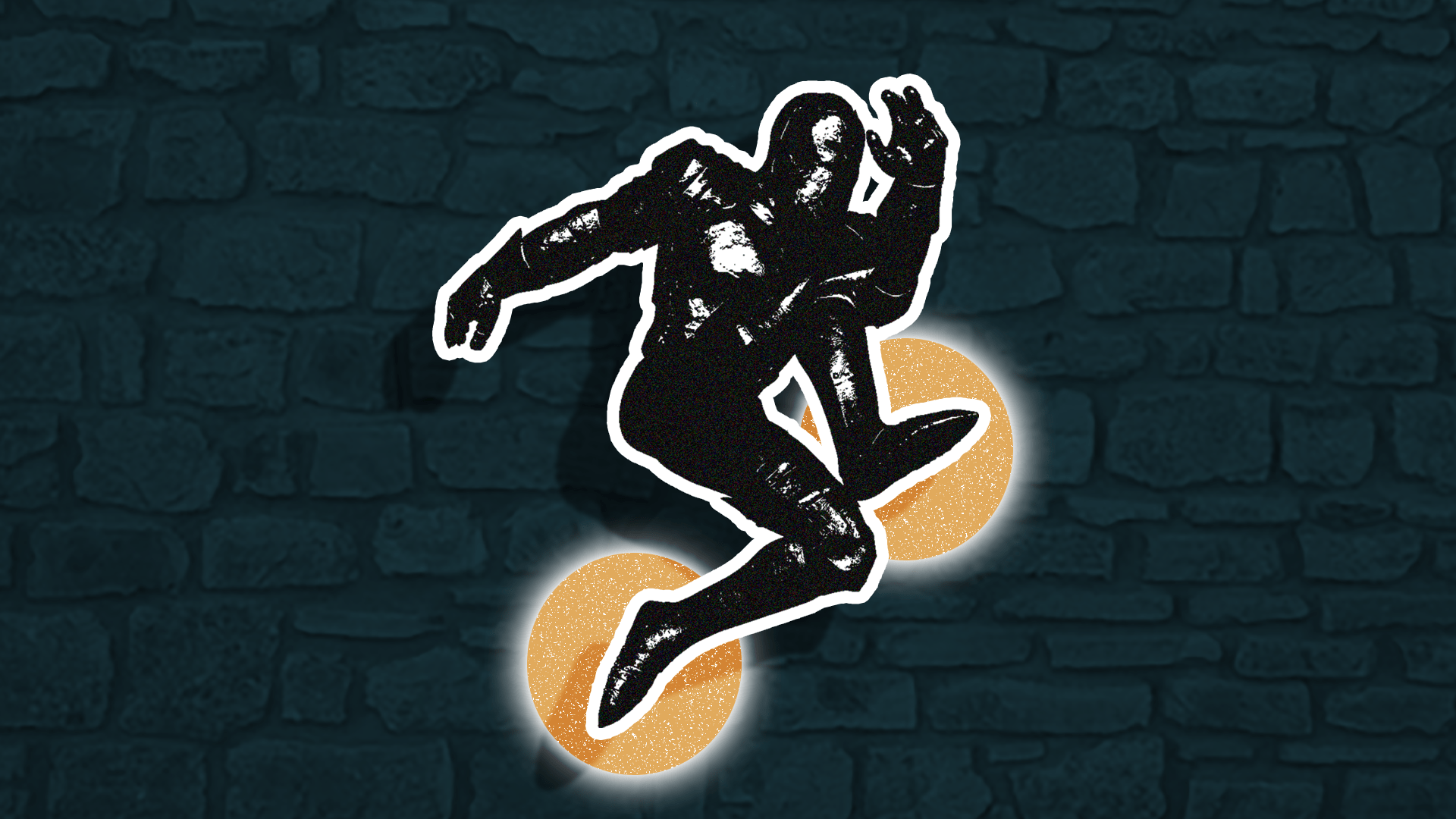
Running through the forest the Dungeon Master describes the rocky and crooked terrain around you. In the background you hear the echo’s of monsters chasing hurriedly. The party is taking what feels like countless rounds of just running, using up your movement speed as the echo’s reverberate louder.
Then without much warning, the echo from the beasts are carried down into the seemingly infinite stretch of darkness that lays into the ground in front of you. As the leader of the party, you exclaim backward to the group. Letting them know that they need to be ready to jump at any moment, for there is a chasm that expands… squints… about 10ft in front of them.
Panicked faces stare back upon your face, and you cant help but reflect these emotions to them. Before you leap a thought crosses your mind, who will be able to make the jump?


Total Party Kill Productions
Delve into the Dungeon
Step into the world of adventure with these Dungeon Delver Club shirts—the depths are calling, answer the call!
Why the Rules of Jumping Are Important
One of the worse things that can disrupt a storytelling moment or the heat of a battle usually ends up being lack of knowledge. An instance could be something so simple as a player stopping their leap of faith and asking, “Wait how do I jump again?”. Then there is silence where they are just to be met with a confounded and blank face of the Dungeon Master.
Simple rules can sometimes be overlooked, or in most cases, not thought of to be asked until that moment. I think many DM’s can agree that sometimes rules are bent at pivotal moments of their game. When it comes down to it, in campaigns that can last for years, you do not want that same instance to repeat itself and another random ruling be coined from you, the DM, to then be disputed by a player.
This can take time and honestly sucks the energy out of whatever is going on in the game itself, overall ruining the moment. So, how do you jump in Dungeons and Dragons 5e?
How Jumping Works in Dungeons and Dragons 5e
According to the player handbook, there are officially two ways to jump. You can start with a running start that can turn into a long jump, or you can either commence a vertical leap in place called a high jump. Dungeons and Dragons is all about specifics though! How exactly are these leaps and bounds decided by the dice and the numbers that lay throughout your character sheet? It all starts with your strength score.

From Knights Digest’s Dungeons and Dragons Character Sheet
Long Jump
When attempting this jump, it is important that you have some space to work with. With a 10ft running start you can leap a number of feet equal to your Strength score. If, for some reason, you do not have 10ft of running room, then you can initiate a standing long jump. This would bring your standing jump distance to half of what your regular long jump score was. In both outcomes, you will use a foot of movement equal to the distance moved before or while performing the jump.

High Jump
We then would apply some of the same rules to high jump. Like before, you will move 10ft and then your distance vertically would be 3 + your Strength modifier. How do you do a standing high jump in Dungeons and Dragons 5th Edition? You take the distance from your running high jump and you can jump (vertically) half the distance. In similar regards, every foot you move will count as a foot of movement.

Dungeon Master Discretions
Long Jump
In both situations, there can be some work around, up to DM discretion. Let’s start with Long jump for example, there are a few different unexpected obstacles that you can run (jump?) in too. The rule assumes that the height of your jump does not come into play.
Well, lets say we are running away from the local guard of a small city. You suddenly run into a a small rocky barricade, but you as a player to feel some form of excitement from the chase. The DM in this instance can have the players role a DC 10 Strength (Athletics) check to see if they can clear the wall. This is assuming the walls height itself is not a quarter of the long jump distance, if this was the case you would not be able to clear it.
If the terrain on the other side of it was difficult, then the DM should have the player roll another check. This should be a DC 10 Dexterity (Acrobatics) check or they will fall prone.
Halt!
Take A Moment and Support Knight’s Digest!
Adventurers, if you’ve enjoyed the content we’ve worked so hard to create, we humbly ask for your support. Running Knight’s Digest takes countless hours of dedication, creativity, and passion, and we’d love your help to keep our dungeon full of treasure (and coffee).
If you think we’ve earned it, consider donating to help us continue crafting the stories, resources, and ideas you love.
Make a one-time donation
Make a monthly donation
Make a yearly donation
Choose an amount
Or enter a custom amount
Your contribution is appreciated.
Your contribution is appreciated.
Your contribution is appreciated.
DonateDonate monthlyDonate yearlyHigh Jump
With high jumping, you could leave it up to the DM with the height you can jump. If for some reason 3+ your Strength Modifier was not enough. I would go with one of two ways. You can make a Strength (Athletics) check and let the Dungeon Master decide if you can make it. This method is not as specific, and like earlier, it could cause problems later. The second and more favorable method would be to have them roll a DC 18 Strength (Athletics) check. Anything above 18 will add one more foot of movement to your total vertical height.
The final thing I would like to mention on the topic of vertical jumps, would be the reach distance. The motion of jumping does not simply stop at the top of the head, your arms swing forward. Normal anatomy states that a humanoid creature can reach about half their height. So when all is said and done, the full length should be the distance ran, the jump, and finally the length of the body with arms outstretched (1.5x body length total).
Are There Other Forms of Jumping in DND 5e?

There is a large range of different types of leaping and the art of the jump. It can be based on class/subclasses, races, feats, and magic spells. Below will be listed some of the known exceptions to the basics. These are all from the PHB from Dungeons and Dragons 5e.
Class/Subclasses
- Artificer can use Artificer Infusions, which is 10th-level. Replicate Items can make a Ring of Jumping.
- Barbarian, with a 6th-level Path of the Beast, can use Bestial Soul. You will first make a Strength (Athletics) check. Then you can extend your jump by a number of feet equal to the checks total.
- Champion Fighter at 7th-level gains Remarkable Athlete. The running long jump distance can increase by a number of feet equal to the Strength modifier.
- Monk at 2nd level gains ki and Step of the Wind, which can double your jump distance.
- The Oath of Glory Paladin at 3rd-level gains Channel Divinity: Peerless Athlete. You can gain an extra 10ft to high and long jumps (which is still added to your total distance moved.
- Rogue, taking Theif and then at 3rd-level, gains Second-story work. With a running jump, the distance covered will increase by a number of feet equal to your DEX modifier.
- Warlock at 9th-level, can use Eldritch Invocations. This can let you take a Otherwordly Leap, casting jump on yourself without usuing spells or materials.
Races
- Grungs have one of the biggest exceptions to the rules. With or without running, their long jump is up to 25ft and high jump is up to 15ft.
- Harengons have Rabbit Hop. When using a bonus action you can jump a number of feet equal to five times your proficiency bonus. This also does not provoke any opportunity attacks. This can be used when your speed is greater than zero and use it as many times as equal to your proficiency bonus.
- Satyrs have Mirthful Leap. When using a jump, roll a d8 and add the number to your feet you will cover.
Feats
- Athlete allows you to use 5 ft of movement for running starts instead of 10ft.
Spells
- Jump is a first-level spell that allows your jump distance to be tripled for one minute.
If you liked hearing about the various uses of jumping, you might like our article on Imprisonment: The Ultimate Way To Get Rid Of A Problem!










Leave a Reply